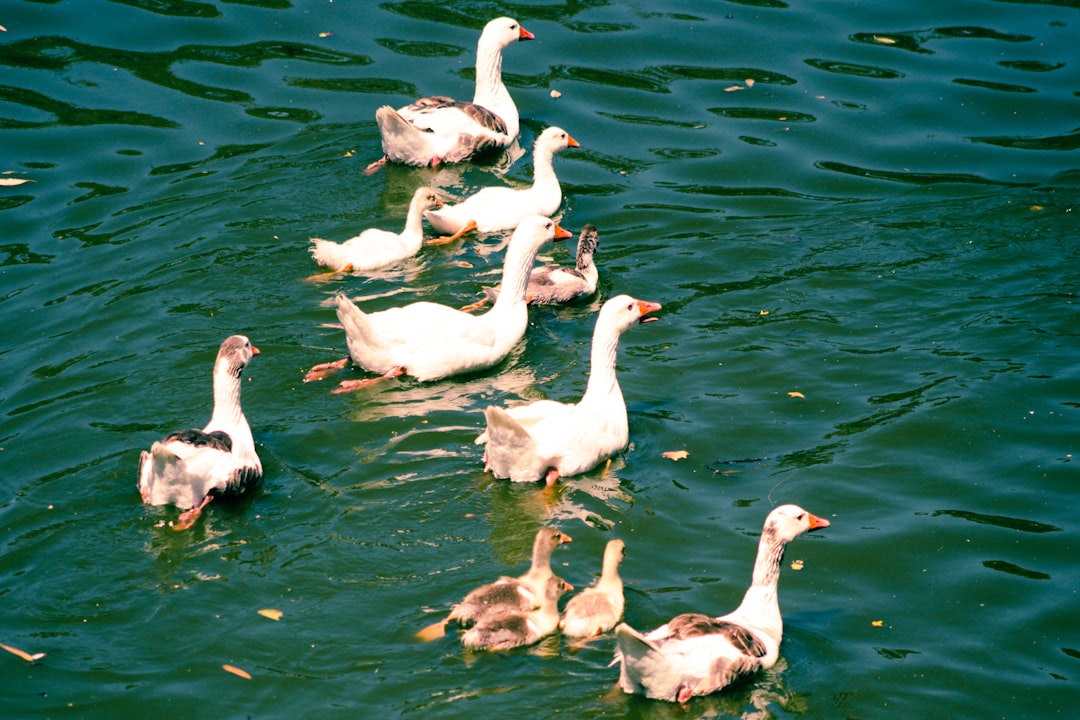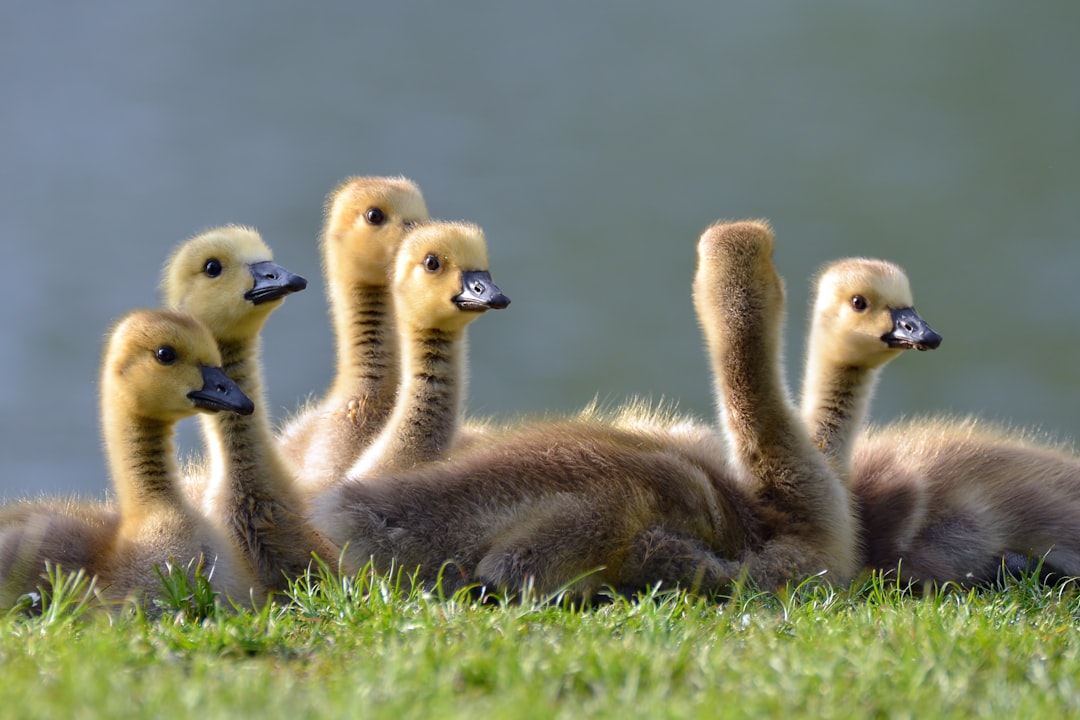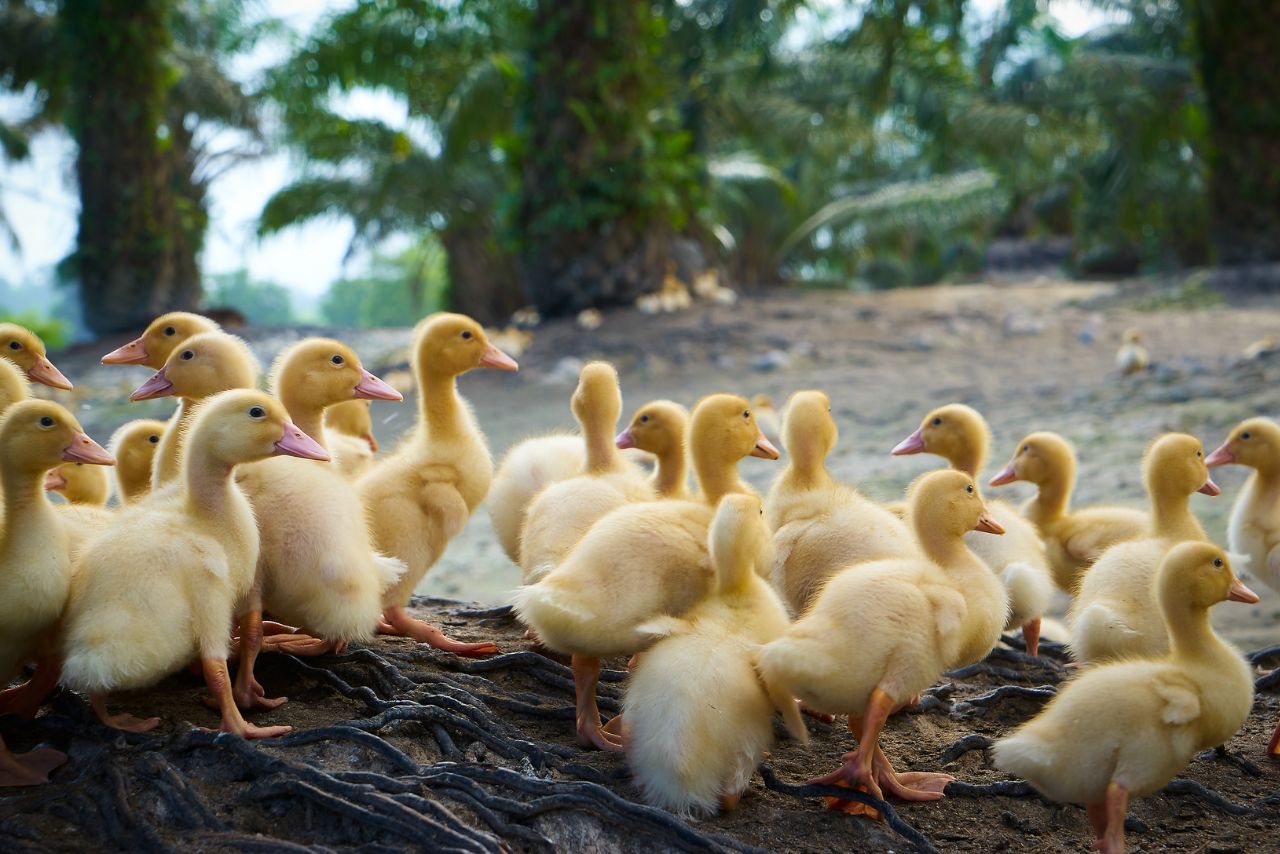Many of us have seen these adorable creatures swimming in a pond or waddling around in a park.
What Is A Group Of Baby Ducks Called? A group of baby ducks is called a “brood” or a “clutch.” A brood usually refers to a group of ducklings that are raised together by their mother, while a clutch can also include eggs that have yet to hatch.
Baby ducks, or ducklings, are born with soft, downy feathers and are able to swim and dive shortly after hatching. They are protected and cared for by their mother for the first few weeks of their life.
In this article, we will explore the answer to this question What Is A Group Of Baby Ducks Called? as well as some interesting facts about baby ducks.
Baby ducks are known for their cuteness and playful behavior, and are a popular sight in parks and ponds around the world.
What Is A Group Of Baby Ducks Called?
The most common term for a group of baby ducks is a brood. Other names include a flock and a waddle. Most ducks usually have clutches of around 12 eggs, which means a group of ducklings usually consists of 12 young birds.
Here are some other collective nouns for groups of ducks:
- 1. Badling or badelyng
- 2. Paddling
- 3. Raft
- 4. Sord
- 5. Twack
The collective noun you use for a group of ducks may depend on where you are from.
For example, in the UK, a group of ducks is often called a “paddling”. In the US, a group of ducks is more likely to be called a “flock”.
The Term “Brood” Refers:
The term “brood” refers to a group of baby ducks that are raised together by their mother. It is common for a brood to consist of around 10-12 ducklings, but larger broods have been observed.
Interestingly, it is not uncommon for multiple mother ducks to combine their broods into a larger group, known as a “creche.” This allows the ducklings to socialize with each other and provides extra protection from predators.
The Term “Clutch” Refers :
The term “clutch” can refer to a group of baby ducks that have hatched from the same nest, as well as any eggs that have yet to hatch. A typical clutch size for ducks is around 8-12 eggs, but some species can lay up to 20 or more.
The mother duck will incubate the eggs for around 28 days before they hatch, and then continue to care for and protect her brood.
How Many Baby Ducks Are Usually In A Brood?

A brood of baby ducks can range in size, but typically consists of around 10-12 ducklings. However, larger broods have been observed, with some reaching up to 20 or more ducklings.
The size of the brood can depend on various factors, such as the species of duck and the availability of food and resources.
How Many Baby Ducks Are Usually In A clutch?
A clutch of baby ducks can vary in size depending on the species of duck. However, a typical clutch size for ducks ranges from 8-12 eggs. Some species, such as the mallard, are known to lay up to 20 eggs in a single clutch.
The mother duck will incubate the eggs for around 28 days before they hatch into cute and fluffy ducklings.
What Are Some Other Terms Used To Describe Groups Of Baby Ducks?
Some Other 10 Terms Used To Describe Groups Of Baby Ducks Are Given Below.
- Brood
- Clutch
- Flock
- Mob
- Nest
- Paddling
- Plump
- Raft
- Team
- Brace
A Group Of Adult Ducks Is Refers As:

A group of adult ducks is referred to as a “flock.” Flocks can consist of both males and females, and can range in size from just a few individuals to hundreds or even thousands.
During the breeding season, male ducks will often form smaller groups, known as “bachelor flocks,” while females will form larger flocks to care for their young.
A Group Of Ducks In Flight Is Called A “Team” Or A “String”.
A Group Of Baby Ducks On The Water Is Refers As:
A group of baby ducks on the water is referred to as a “raft” or a “paddle.” This is because they often float together in large groups, creating the appearance of a floating platform.
Ducks Walking On Land Refers As:
When ducks are walking on land, they are often referred to as a “brace.” This term is typically used to describe a small group of ducks that are walking together in a straight line.
Ducks have webbed feet that make it easier for them to walk on soft ground, but they can also be clumsy when walking on harder surfaces.
How Do Baby Ducks Function In A Flock?
As baby ducks grow older, they will eventually join a flock. Flocks provide safety in numbers and allow ducks to find food more easily.
Baby ducks learn important social skills from their mothers, such as how to communicate with other ducks using calls and body language.
They also learn how to follow the lead of more experienced ducks when it comes to finding food and avoiding predators.
In a flock, baby ducks will continue to be protected by adult ducks, particularly their mother if she is still present. As they mature, they will gradually become more independent and start forming their own social groups within the larger flock.
Other Collective Nouns Used To Describe Swimming Baby Ducks
- Paddling
- Raft
- Team
- Flock
- Brood
Other Collective Nouns Used To Describe Walking Baby Ducks :
Important terms used for walking baby ducks are as:
- Flock
- Brace
- Team
- Paddling
- Raft
Do Baby Ducks Migrate Together?

Yes, baby ducks do migrate together with their mothers. Ducks are social animals, and they travel in flocks for safety and companionship. The flocks can consist of hundreds or even thousands of ducks, and they usually follow a leader.
The mother duck will lead her ducklings on their migration journey, and she will teach them how to find food and water along the way.
Do Baby Ducks Flock Together In Groups?
Yes, baby ducks do flock together in groups. Flocking provides them with protection, comfort, and support from other ducks. It also helps them learn vital skills from their mothers and other adult ducks in the group.
As they grow older and become more independent, they will continue to flock together for safety and companionship.
What Is A Group Of Flying Baby ducks Called?
A group of flying baby ducks is often referred to as a “skein” or a “team.” This term is used to describe the V-shape formation that ducks often fly in during migration season.
Flying in a V-formation helps reduce wind resistance and allows ducks to conserve energy during long flights.
It’s important to note that not all species of ducks migrate, and those that do may not always fly in a V-formation.
What Is A Group Of Wild Baby Ducks Called?
A group of wild baby ducks is typically referred to as a brood. Broods are usually made up of the offspring of a single female duck, although it’s not uncommon for two or more females to form a larger brood together.
Broods are important for the survival and growth of baby ducks. They provide protection, companionship, and opportunities for social learning.
For What Reason Is A Group Of Ducks Called A Pontoon?
A group of ducks is not typically called a pontoon, but rather a flock, brace, team, paddling or raft, depending on whether they are walking or swimming.
The term pontoon is more commonly used to describe a type of floating device used to support bridges and other structures over water.
For What Reason Do Baby Ducks Run Together In Huge Gatherings?
Baby ducks run together in large gatherings for various reasons. One of the main reasons is to find food. Running together helps them cover more ground and increases their chances of finding insects, plants, and other sources of food.
Another reason why baby ducks run together is for social learning.
Young ducks learn important skills from their mothers and other adult ducks in the group, such as how to communicate with each other using calls and body language and how to navigate through their environment.
Running together in large groups also provides comfort and support for baby ducks. They feel safer when surrounded by their peers and are less likely to become stressed or anxious.
Conclusion: What Is A Group Of Baby Ducks Called?
Baby ducks are social creatures that rely on their group for safety, companionship, and social learning. Whether they are walking or swimming, flocking provides them with protection from predators and helps them find food more easily.
As they grow older, they will continue to flock together for safety and companionship. It’s important for us as humans to take steps to protect these adorable creatures and preserve their habitats.
Habitat loss, pollution, and predation by animals such as raccoons and foxes are just a few of the threats that baby ducks face.
By taking action to reduce these threats and raise awareness about the importance of protecting wildlife, we can help ensure that future generations get to enjoy these wonderful creatures in the wild.
FAQs
What Is a Group of Baby Ducks Called?
A group of baby ducks is commonly known as a brood.
How Many Ducks Make up A Typical Brood?
The size of a brood varies depending on the species of duck and the availability of food and resources in their environment.
Why do baby ducks run together in large groups?
Baby ducks run together in large groups to find food, for protection from predators, and for social learning.
Do All Species of Ducks Migrate in V-Formation?
Not all species of ducks migrate, and those that do may not always fly in a V-formation.
How Can We Help Protect Baby Ducks and Their Habitats?
We can take action to reduce threats like habitat loss, pollution, and predation by animals such as raccoons and foxes, and raise awareness about the importance of protecting wildlife.




